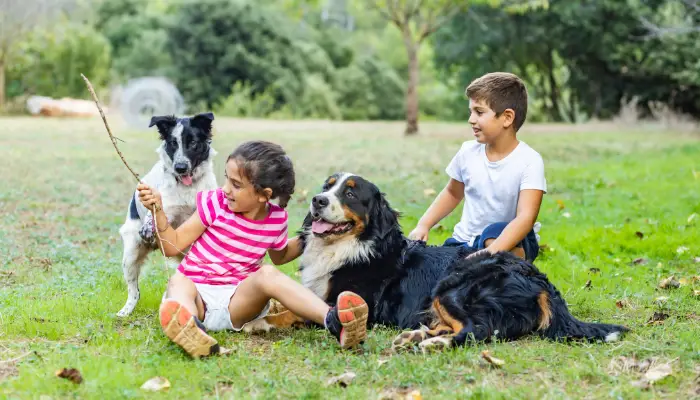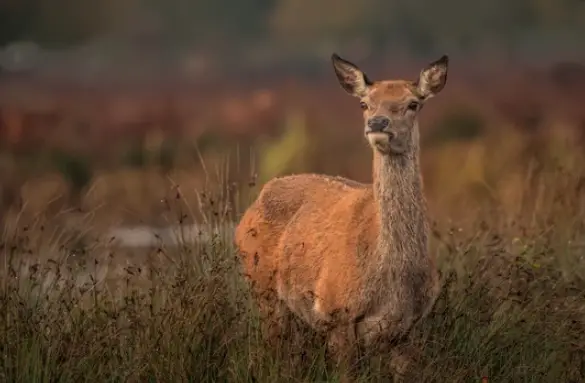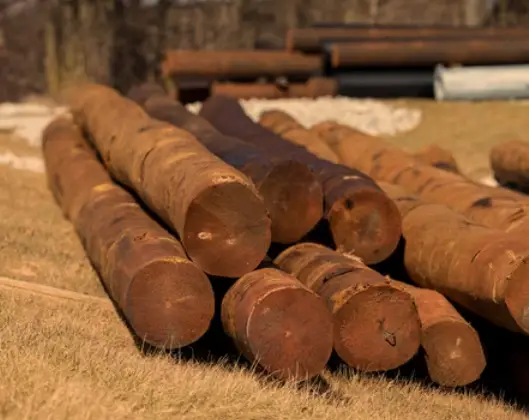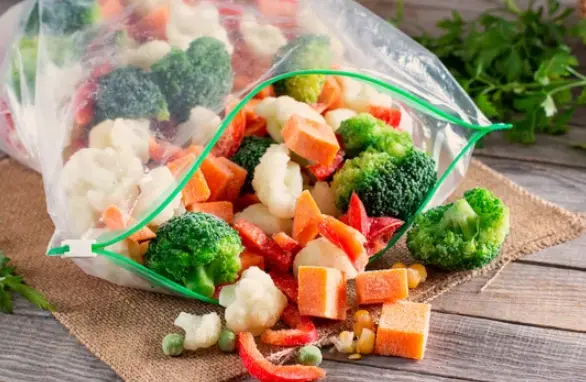How to Make Your Yard a Fun and Safe Place for Kids
How to Make Your Yard a Fun and Safe Place for Kids?
Do you want your kids to enjoy the outdoors and have fun in your yard? Do you also want to make sure they are safe and avoid potential hazards? If so, you are not alone. Many parents and guardians want to create a backyard that is both entertaining and secure for their children.
In this blog post, we will share some tips and ideas on making your yard a fun and safe place for kids. We will cover topics such as:
- Establishing safety rules
- Fencing your yard
- Creating a designated play area
- Checking for holes or trip hazards
- Reducing the possibility of insect bites or stings
- Storing items in the garden shed
- Avoiding dangerous plants
- Choosing a BBQ location
- Maintaining the landscape
By following these suggestions, you can transform your yard into a playground that your kids will love and that you will feel comfortable with.
Establishing Safety Rules
The first step to making your yard a safer place for kids is to establish some safety rules that they are aware of and can follow. Safety rules can make the outdoors more enjoyable for both you and your kids. You won’t have to nag them to stop doing something, and they’ll have fewer boo-boos.
Some examples of possible safety rules are:
- No playing in the shed or garage
- Keep gate(s) closed
- Take turns on play equipment such as slides or swings
- No throwing rocks
- No running with sticks
Even with good intentions, established safety rules with kids can go in one ear and out the other. Although there is a way to assist more, it is nevertheless a necessary first step in creating a safer environment for children.
Fencing Your Yard

A fence can be a simple and effective way to provide boundaries for your kids’ play area. It can also be used as a barrier to an area that is off-limits to children without adult supervision, such as a swimming pool or hot tub.
You’ll want to install a tall, sturdy fence that kids can’t climb. Wood, iron, and vinyl are all great fencing materials for backyard safety, but each one does come with some shortcomings.
- Wood: Possibility of splinters
- Iron: Doesn’t offer much privacy
- Tall vinyl panels can accumulate mold, mildew, or algae; curious kids could find it if you don’t wash it off before they see it.
You can choose the fencing material that suits your budget and style, but make sure to maintain it regularly and check for any damage or wear.
Creating a Designated Play Area

Another way to make your yard a fun and safe place for kids is to create a designated play area where they can enjoy their favorite activities. A play area can be as simple or as elaborate as you want, depending on your space and resources. Here are some ideas for creating a play area in your yard:
- Build a lean-to using sticks and branches from your yard.
- Use PVC pipe and waterproof canvas to create an outdoor fort.
- Create a reading nook with some plywood and a few pine boards.
- Let them build their fort with a set of oversized foam building blocks.
- Install a sandbox, a swing set, a slide, or a climbing wall.
- Set up a water table, a sprinkler, or a kiddie pool for hot days.
- Plant a vegetable garden, a butterfly garden, or a fairy garden.
- Hang a bird feeder, a wind chime, or a solar light.
Whatever you choose to do, make sure to provide enough shade, seating, and storage for the play area. You can use umbrellas, canopies, or trees for shade; benches, chairs, or cushions for seating; and bins, baskets, or boxes for storage. You can also add some colorful decorations, such as flags, banners, or signs, to make the play area more inviting and personalized.
Checking for Holes or Trip Hazards
One of the most common causes of injuries in the yard is tripping or falling over something. To prevent this, you should check your yard for any holes or trip hazards that could pose a risk to your kids. Some examples of holes or trip hazards are:
- Uneven or cracked pavement
- Loose or exposed wires
- Tree roots or stumps
- Rocks or pebbles
- Hoses or cords
- Toys or tools
You should fill any holes, level any bumps, and remove any obstacles that could cause your kids to trip or fall. You should also keep your yard tidy and organized and put away any items that are not in use. This will not only make your yard safer but also more attractive and spacious.
Reducing the Possibility of Insect Bites or Stings
Another potential hazard in the yard is insect bites or stings, which can cause pain, itching, swelling, or allergic reactions. To reduce the possibility of insect bites or stings, you should take some precautions to keep the bugs away from your kids. Some of these precautions are:
- Apply insect repellent to your kids before they go outside, and reapply as needed.
- Avoid using scented products, such as perfumes, lotions, or candles, that could attract insects.
- Wear light-colored and long-sleeved clothing, and avoid wearing sandals or open-toed shoes.
- Keep food and drinks covered or indoors, and clean up any spills or crumbs.
- Eliminate any standing water, such as buckets, birdbaths, or puddles, that could breed mosquitoes.
- Trim any overgrown vegetation, such as grass, weeds, or bushes, that could harbor insects.
- Check for any nests or hives of bees, wasps, or hornets, and remove them safely or call a professional.
If your kids do get bitten or stung by an insect, you should wash the affected area with soap and water, apply a cold compress or ice pack, and use an antihistamine or hydrocortisone cream to relieve the symptoms. If your kids have a severe allergic reaction, such as difficulty breathing, swelling of the face or throat, or nausea, you should seek medical attention immediately.
Storing Items in the Garden Shed

A garden shed can be a useful place to store your gardening tools, lawn equipment, or outdoor furniture. However, it can also be a dangerous place for kids, especially if they are curious and like to explore. To make your garden shed safer for kids, you should follow these tips:
- Lock the shed door and keep the key out of reach of the kids.
- Store any sharp, heavy, or hazardous items, such as knives, axes, or chemicals, in a locked cabinet or box.
- Label any containers or bottles with their contents and warnings, and dispose of any expired or unused products.
- Keep any electrical or battery-operated items, such as mowers, trimmers, or blowers, unplugged or turned off when not in use.
- Install a smoke detector and a fire extinguisher in the shed, and check them regularly.
- Ventilate the shed properly, and avoid using it as a workshop or a playroom.
By storing items in the garden shed safely and securely, you can prevent your kids from accessing them and getting hurt. You can also free up some space in your yard and make it more enjoyable for your kids.
Avoiding Dangerous Plants
Plants can add beauty and life to your yard, but they can also pose a threat to your kids if they are poisonous, thorny, or allergenic. To avoid dangerous plants, you should do some research before you plant or buy any plants for your yard. You should also teach your kids not to touch or eat any plants without your permission.
Some examples of plants that you should avoid or be careful with are:
- Poison ivy, poison oak, or poison sumac can cause a rash, blisters, or itching.
- Oleander, foxglove, or lily of the valley can cause nausea, vomiting, or an irregular heartbeat.
- Daffodils, tulips, or hyacinths can cause mouth irritation, drooling, or diarrhea.
- Rose, holly, or cactus, which can cause punctures, cuts, or infections.
- Ragweed, goldenrod, or chrysanthemum, which can cause sneezing, a runny nose, or watery eyes,.
If your kids come into contact with any dangerous plants, you should wash the affected area with soap and water and use a calamine lotion or aloe vera gel to soothe the skin. If your kids ingest any dangerous plants, you should call the poison control center or your doctor right away.
Choosing a BBQ Location

A BBQ can be a great way to enjoy some delicious food and have some fun with your family and friends. However, it can also be a source of fire, smoke, or burns, especially if you have kids. To choose a safe BBQ location, you should follow these guidelines:
- Place the BBQ at least 10 feet away from any structures, trees, or flammable materials, such as curtains, cushions, or paper plates.
- Use a flat and stable surface, such as concrete, brick, or stone, and avoid grass, dirt, or gravel, which could catch fire or tip over.
- Keep the BBQ away from any windy or rainy areas
Conclusion
Making your yard a fun and safe place for kids is not as hard as it may seem. By following the tips and ideas we shared in this blog post, you can create a backyard that your kids will love and that you will feel comfortable with. You can establish some safety rules, fence your yard, create a designated play area, check for holes or trip hazards, reduce the possibility of insect bites or stings, store items in the garden shed, avoid dangerous plants, and choose a safe BBQ location. These steps will not only make your yard safer but also more attractive and spacious. So, what are you waiting for? Grab your tools, your kids, and your imagination, and start transforming your yard into a playground today!
Frequently Asked Questions on How to Make Your Yard a Fun and Safe Place for Kids:
Q: How can I make my yard more attractive for kids?
- A: You can make your yard more attractive for kids by adding some colorful decorations, such as flags, banners, or signs, to make the play area more inviting and personalized. You can also plant some flowers, herbs, or fruits that your kids can enjoy smelling, tasting, or picking.
Q: How can I keep my kids hydrated and cool in the yard?
- You can keep your kids hydrated and cool in the yard by providing them with plenty of water and healthy snacks, such as fruits, vegetables, or nuts. You can also set up a water table, a sprinkler, or a kiddie pool for hot days, and make sure they have enough shade, sunscreen, and hats.
Q: How can I make my yard more educational for kids?
- A: You can make your yard more educational for kids by incorporating some learning activities, such as counting, measuring, or sorting, into their play. You can also teach them about nature, such as the names and features of different plants, animals, or insects, or the cycles and seasons of the earth.
Q: How can I make my yard more eco-friendly for kids?
- A: You can make your yard more eco-friendly for kids by using natural or recycled materials, such as wood, stone, or cardboard, for your play equipment or decorations. You can also compost your food scraps, collect rainwater, or use solar power for your lighting or heating.
Q: How can I make my yard more inclusive for kids?
- A: You can make your yard more inclusive for kids by ensuring that your play area is accessible and adaptable for kids of different ages, abilities, and preferences. You can also provide a variety of toys, games, and books that reflect the diversity and cultures of your kids and their friends.
Q: How can I make my yard more fun for kids at night?
- A: You can make your yard more fun for kids at night by adding some lights, such as fairy lights, lanterns, or glow sticks, to create a magical atmosphere. You can also organize some night-time activities, such as stargazing, storytelling, or camping, to make your kids feel adventurous and cozy.
Q: How can I make my yard more safe for kids in the winter?
- You can make your yard more safe for kids in the winter by clearing any snow or ice from your walkways, stairs, or play area. You can also check your plants for any frost damage or pests, and cover or store any items that are not weather-resistant. You should also dress your kids warmly and limit their exposure to the cold.
Q: How can I make my yard more fun for kids in the rain?
- A: You can make your yard more fun for kids in the rain by providing them with some rain gear, such as boots, coats, or umbrellas, and letting them splash in the puddles, make mud pies, or catch raindrops. You can also set up a tent, a tarp, or a canopy to keep them dry and warm.
Q: How can I make my yard more safe for kids around pets?
- You can make your yard more safe for kids around pets by supervising their interactions and teaching them how to respect and care for the animals. You should also keep your pets vaccinated, groomed, and leashed, and clean up any messes or waste they leave behind.
Q: How can I make my yard more fun for kids and their friends?
- You can make your yard more fun for kids and their friends by hosting some parties, picnics, or playdates and inviting their classmates, neighbors, or relatives. You can also prepare some food, drinks, and music and plan some games, crafts, or contests to keep them entertained and engaged.








